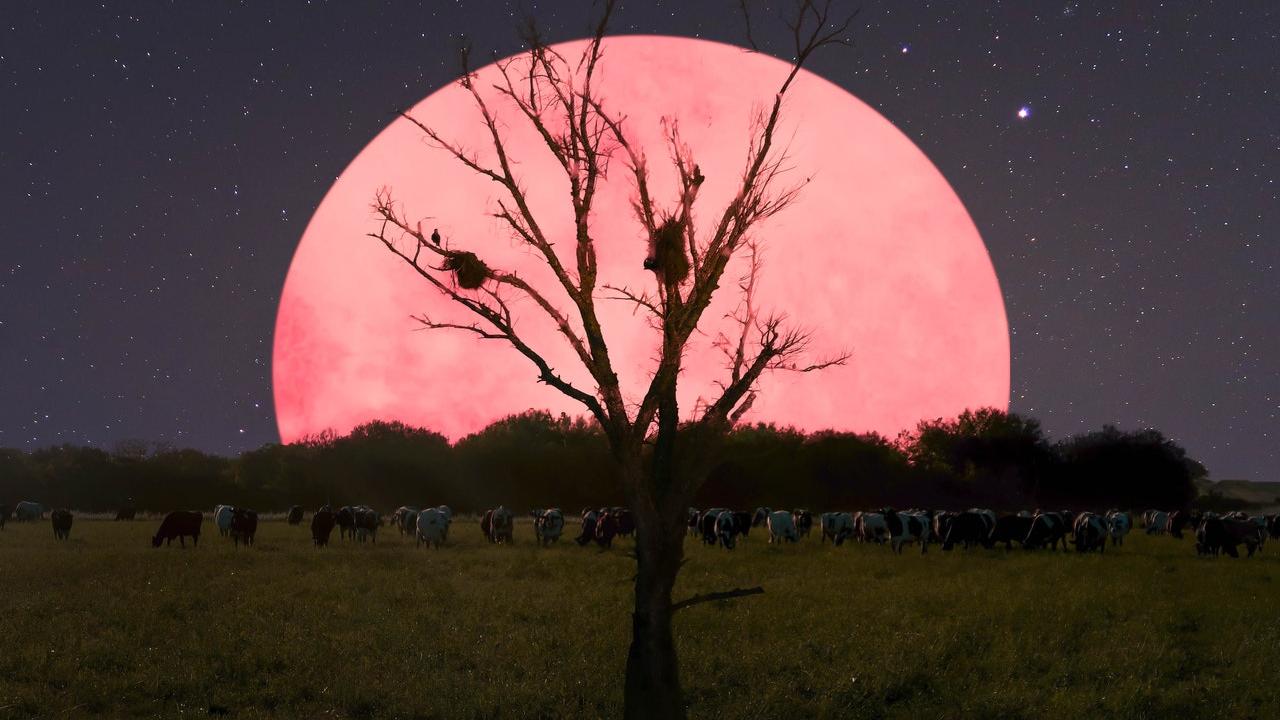
#Super pink moom full#
When the full moon moves into Earth’s shadow, it darkens, but it won’t disappear. The penumbra is the partial outer shadow, and the umbra is the full, dark shadow. Earth casts two shadows on the moon during the eclipse. Neither of the partial solar eclipses will be visible from North America.Ī lunar eclipse can occur only during a full moon when the sun, Earth and moon align, and the moon passes into Earth’s shadow. Another one on October 25 will be visible to those in Greenland, Iceland, Europe, northeastern Africa, the Middle East, western Asia, India and western China. Be sure to wear proper eclipse glasses to safely view solar eclipses, as the sun’s light can be damaging to the eye.Ī partial solar eclipse on April 30 can be seen by those in southern South America, the southeastern Pacific Ocean and the Antarctic peninsula. Partial solar eclipses occur when the moon passes in front of the sun but only blocks some of its light. There will be two total lunar eclipses and two partial solar eclipses in 2022, according to The Old Farmer’s Almanac. While these are the popularized names associated with the monthly full moons, the significance of each one may vary across Native American tribes. Here’s a list of the remaining moons for 2022, according to the Farmers’ Almanac: “But in some areas of the Midwest, people will see some below-average morning temperatures this weekend, which may leave them wishing for a pale moon.”Īfter the pink moon, there are eight full moon events still to come in 2022, with two of them qualifying as supermoons. There is also a chance of neither,” said CNN Meteorologist Judson Jones. “There certainly is a chance of rain or frost this weekend. If the full moon rises pale, expect rain.” According to The Old Farmer’s Almanac, “A full moon in April brings frost. However, it still comes with its own folklore. Unlike the last two years, this April’s pink moon will not be a supermoon. The pink moon is Bak Poya for Buddhists, especially in Sri Lanka, and commemorates Buddha’s visit to the island country, where Buddha prevented a war by settling a dispute between chiefs. For Hindus, this moon marks Hanuman Jayanti, the celebration of the Hindu monkey deity Lord Hanuman. It’s called the Paschal moon in the Christian ecclesiastical calendar, because it’s the full moon before Easter.
#Super pink moom Patch#
Without timely and accurate warnings, space weather events like the geomagnetic storms caused by changes in solar wind have the potential to disrupt nearly every major public infrastructure system, including power grids, telecommunications, aviation and GPS.ĭSCOVR, which had been offline for about nine months due to a technical glitch, became fully operational again last month after NOAA and NASA engineers developed a flight software patch to restore its operations.The pink moon also aligns with several religious holidays, according to NASA. Positioned at Lagrange point 1 (L1) between the Earth and sun, the DSCOVR satellite not only monitors the weather on our planet, but also the weather in space. Although not a pink moon, here, the full far side of the moon can be seen as it passes in front of the Earth. The image above was taken on Jby the Earth Polychromatic Imaging Camera (EPIC) aboard the NOAA/NASA Deep Space Climate Observatory (DSCOVR) satellite, and itâs one of our favorites.

In general, supermoons are about seven percent bigger and about 15 percent brighter than a typical full moon. The full âWorm Moonâ occurred on March 9, the full âPink Moonâ will be tonight, and Mayâs full âFlower Moonâ will occur on May 7.
#Super pink moom series#
It is also the second in a series of three supermoons that will occur this year. Thus, it became associated with the color pink. This particular one occurs around the same time that the pink wildflower known as moss phlox (Phlox subulata) blooms. Although it isnât really pink in color, this name arose because historically, full moon names were used to track seasons. EDT.Īs the first full moon of spring, it is also known as the Paschal Full Moon, and since it falls in April this year, itâs also called the Pink Moon. It will reach peak illumination at 10:35 p.m. In this case, it will be at perigee-syzygy, which is not only the closest point to Earth (221,772 miles away), but when the Earth, moon, and sun are all aligned. This is whatâs colloquially called a âsupermoon,â which generally refers to a new or full moon that is closest to Earth in its elliptical orbit (a point known as the perigee), and thus appears larger than normal.

If you look up at the sky this evening after sunset, you will likely catch a glimpse of the biggest and brightest full moon of 2020.


 0 kommentar(er)
0 kommentar(er)
